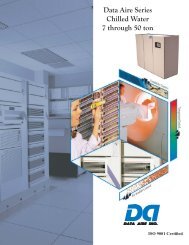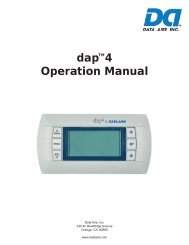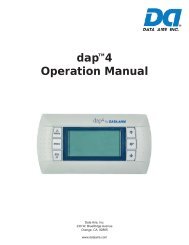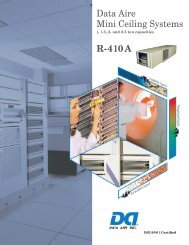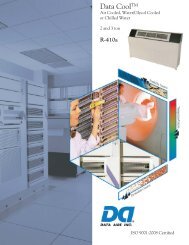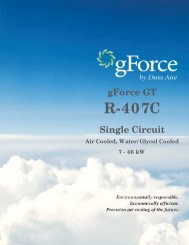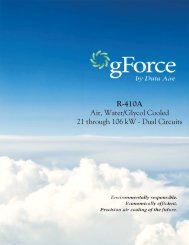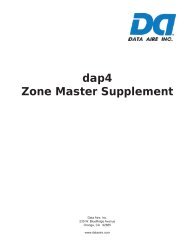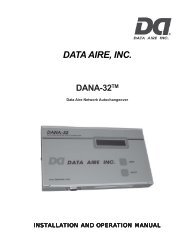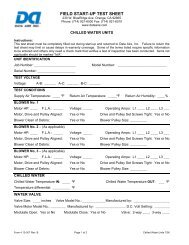Installation, Operation and Maintenance Manual - Data Aire
Installation, Operation and Maintenance Manual - Data Aire
Installation, Operation and Maintenance Manual - Data Aire
You also want an ePaper? Increase the reach of your titles
YUMPU automatically turns print PDFs into web optimized ePapers that Google loves.
Do not locate the heat exchanger in a location that is<br />
bordered by tall obstructions (i.e. higher than 10 feet)<br />
on no more than two sides. See fi gure at right for<br />
minimum clearance from obstructions <strong>and</strong> between<br />
units. With proper clearance on all sides, two units<br />
can be placed side by side. Additional units should<br />
be placed at least 48 inches apart.<br />
Noise factors should also be considered when locating<br />
an air cooled heat exchanger. Proximity to windows,<br />
walls <strong>and</strong> surrounding structures can cause<br />
objections by the occupants. An acoustical expert<br />
should be consulted when noise is of a particular<br />
concern.<br />
Air cooled heat exchangers should be placed at a level that is higher than the indoor evaporator.<br />
<strong>Installation</strong> of the remote heat exchanger (condenser or condensing unit) more than 10 feet below<br />
the evaporator is not recommended. Excessive liquid line pressure drop can cause poor evaporator<br />
performance.<br />
Piping must be supported within 18 inches of the inlet <strong>and</strong> outlet connections. The inlet connection<br />
is located on the top header on all remote heat exchangers <strong>and</strong> the outlet connection is located<br />
on the bottom header of all units.<br />
4.4. Electrical Service<br />
Refer to Sections 3.1 to 3.5 for information regarding line voltage <strong>and</strong> control voltage wiring details.<br />
4.5 Air Cooled Condensers – Model DARC<br />
4.5.1 Fan Speed Control<br />
St<strong>and</strong>ard outdoor air cooled condensers have a fan speed controller on the fi rst fan. On single<br />
fan condensers this is the only means of control. A variable speed controller modulates the motor<br />
speed based on system head pressure. The fan speed controller does not require fi eld adjustment<br />
or programming.<br />
4.5.2 Ambient Thermostats<br />
Additional motors (subsequent to the fan speed control operated motor) on multiple fan heat<br />
exchangers are cycled by ambient sensing thermostats. These thermostats have a capillary tube<br />
with remote sensing bulb. They function best with the sensing bulb mounted below the coil, away<br />
from exposure to direct sun light <strong>and</strong> the bulb in the vertical position. An instruction set comes as<br />
part of a mounting kit that includes a sheet metal bracket, mounting clamps <strong>and</strong> TEK screws. This<br />
includes directions for fi eld mounting <strong>and</strong> adjustment. Desired head pressure should be maintained<br />
at approximately 230-270 PSIG for R-407C <strong>and</strong> 340-400 PSIG for R-410A.<br />
20



